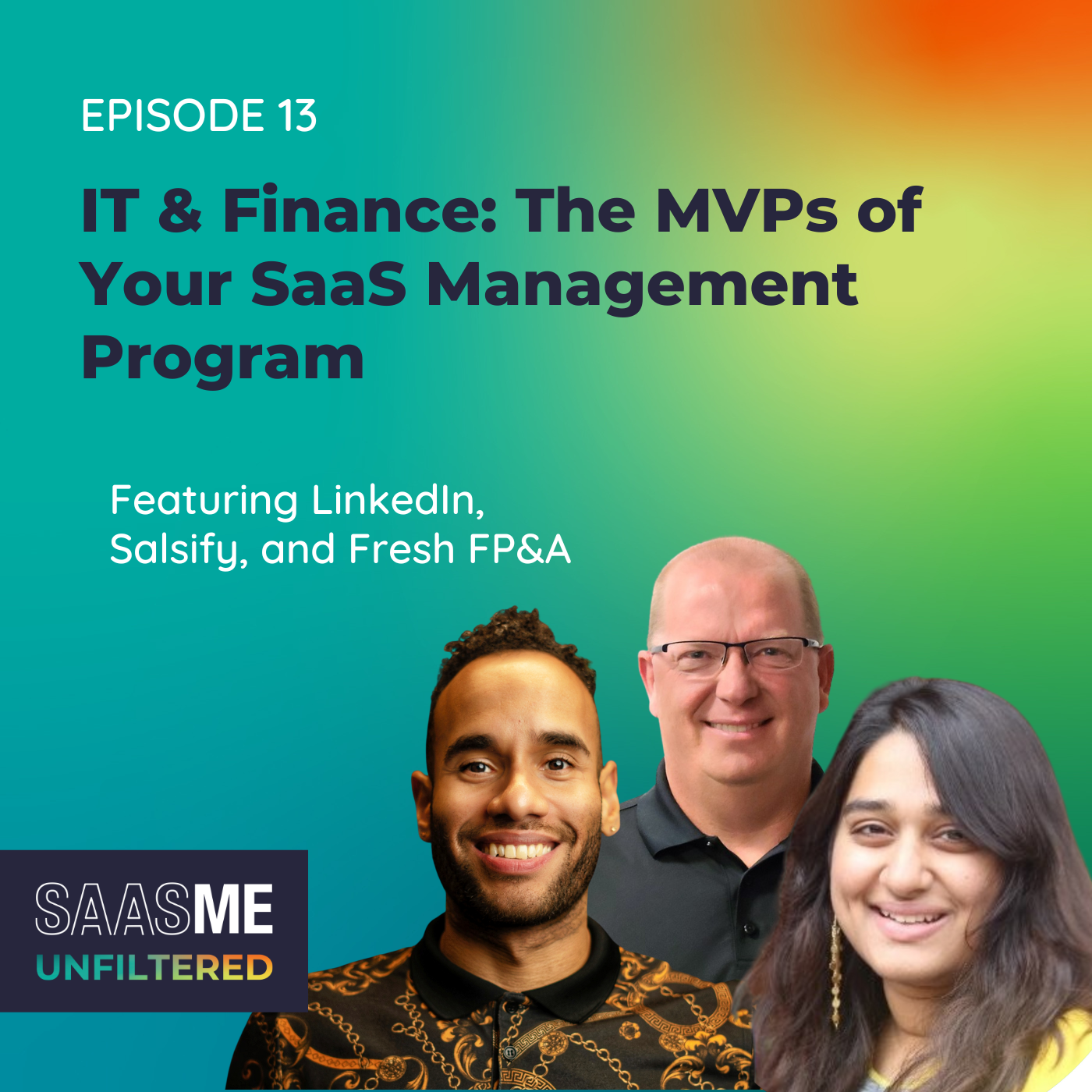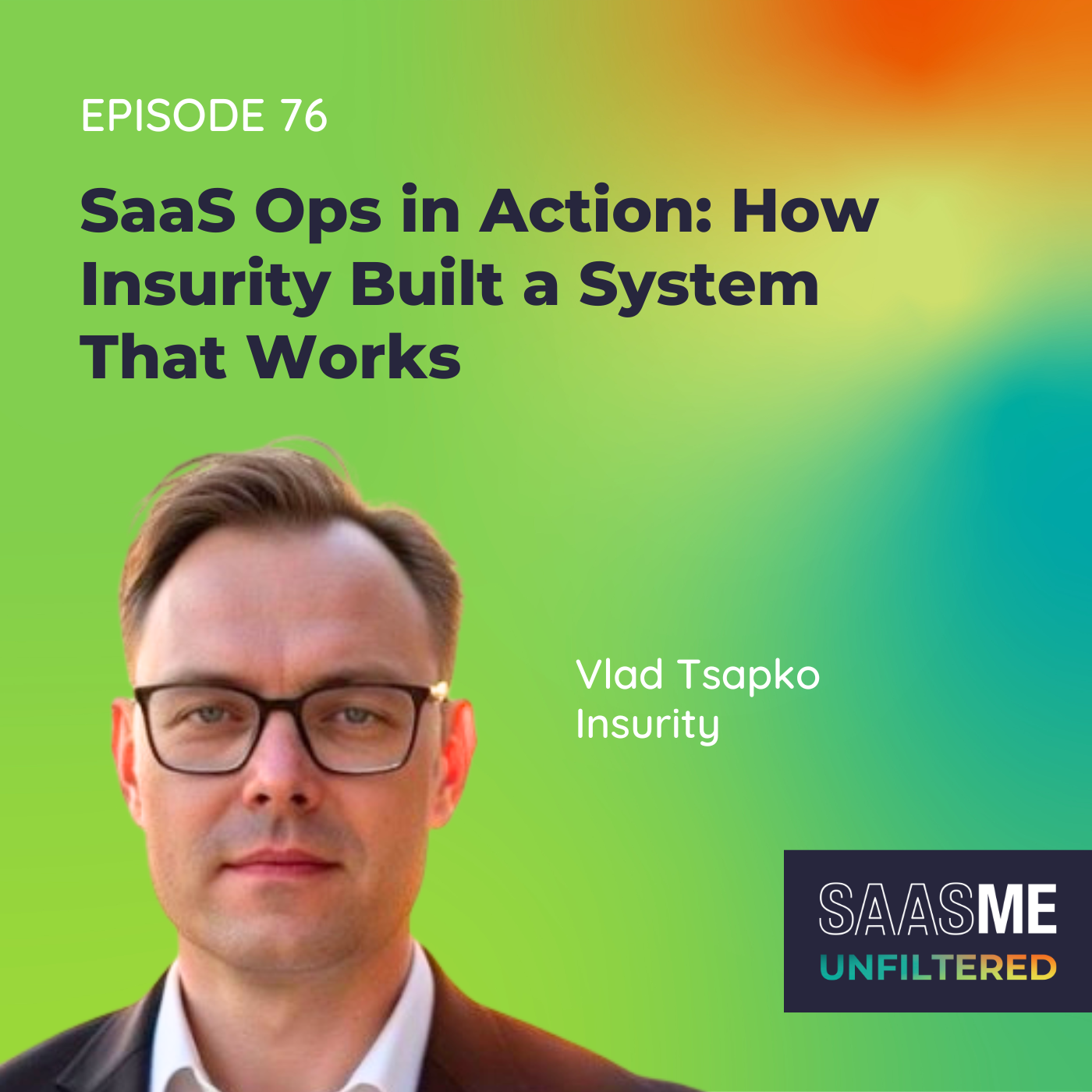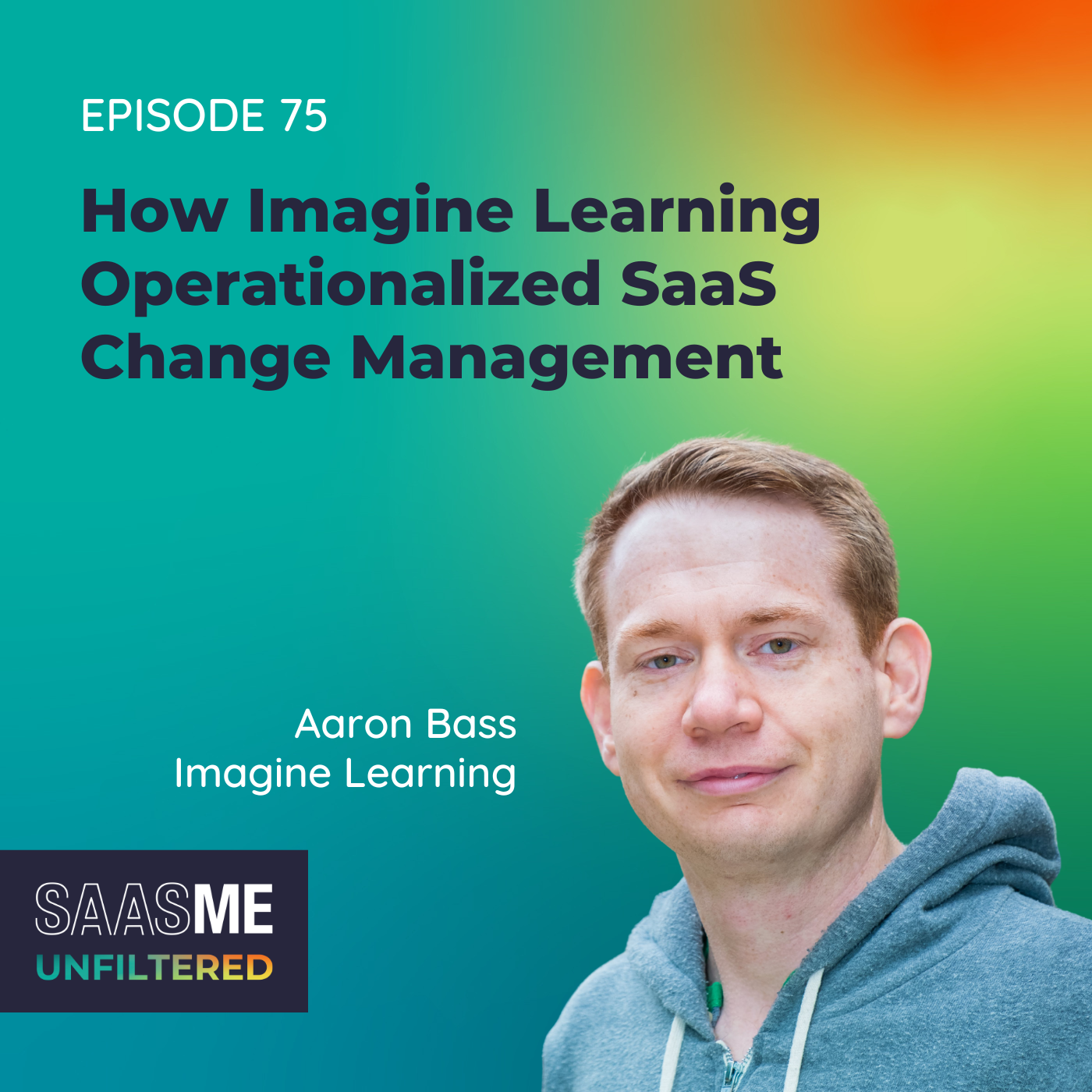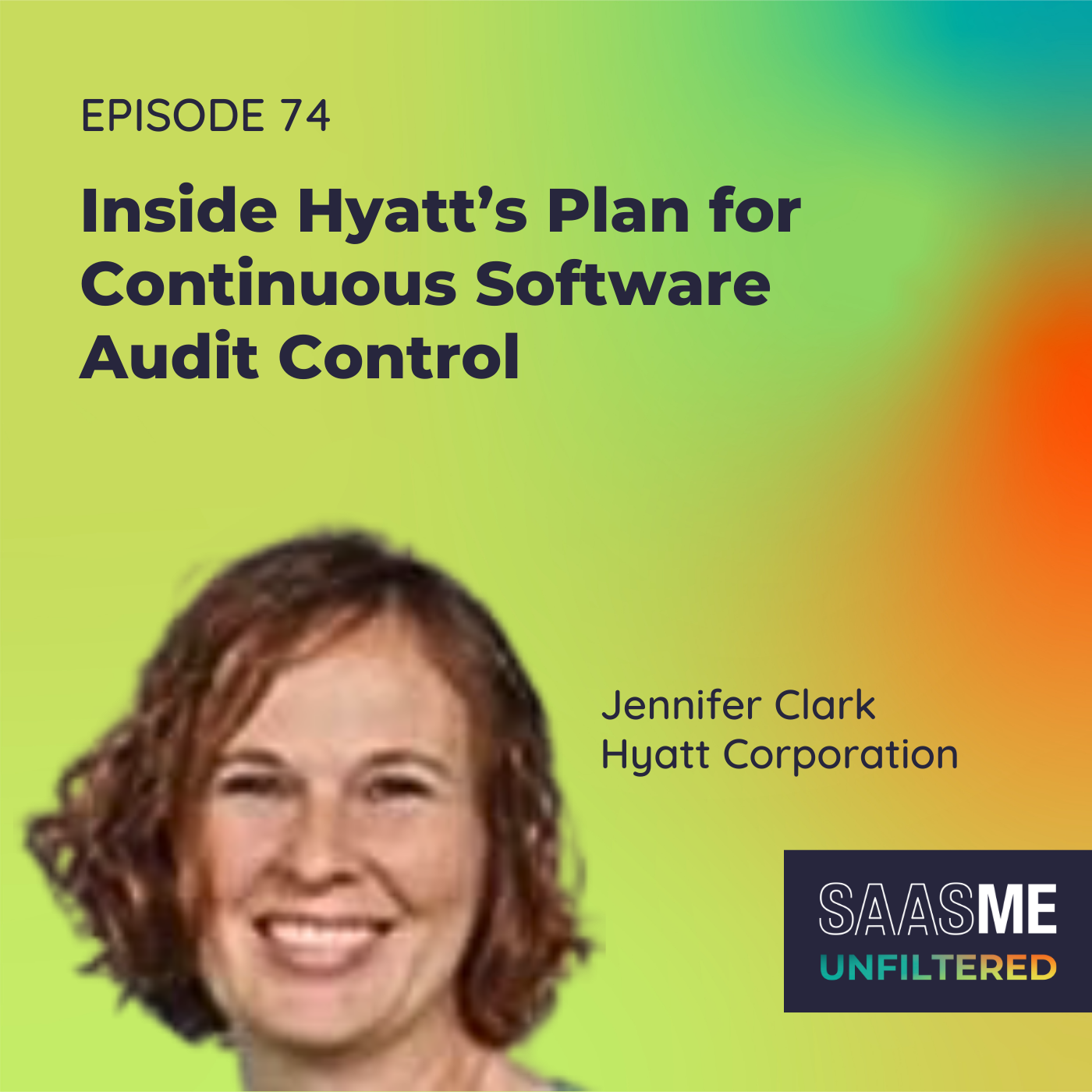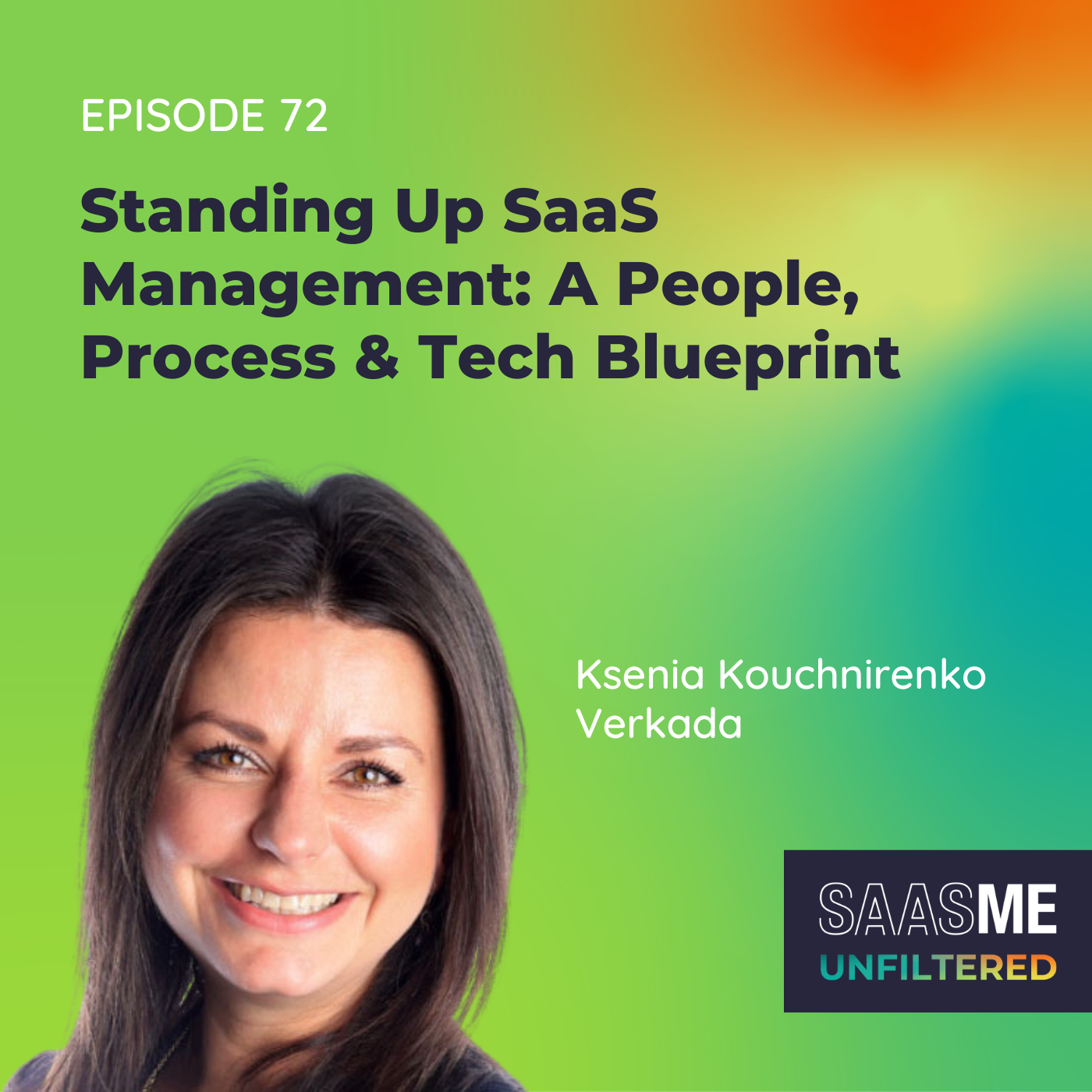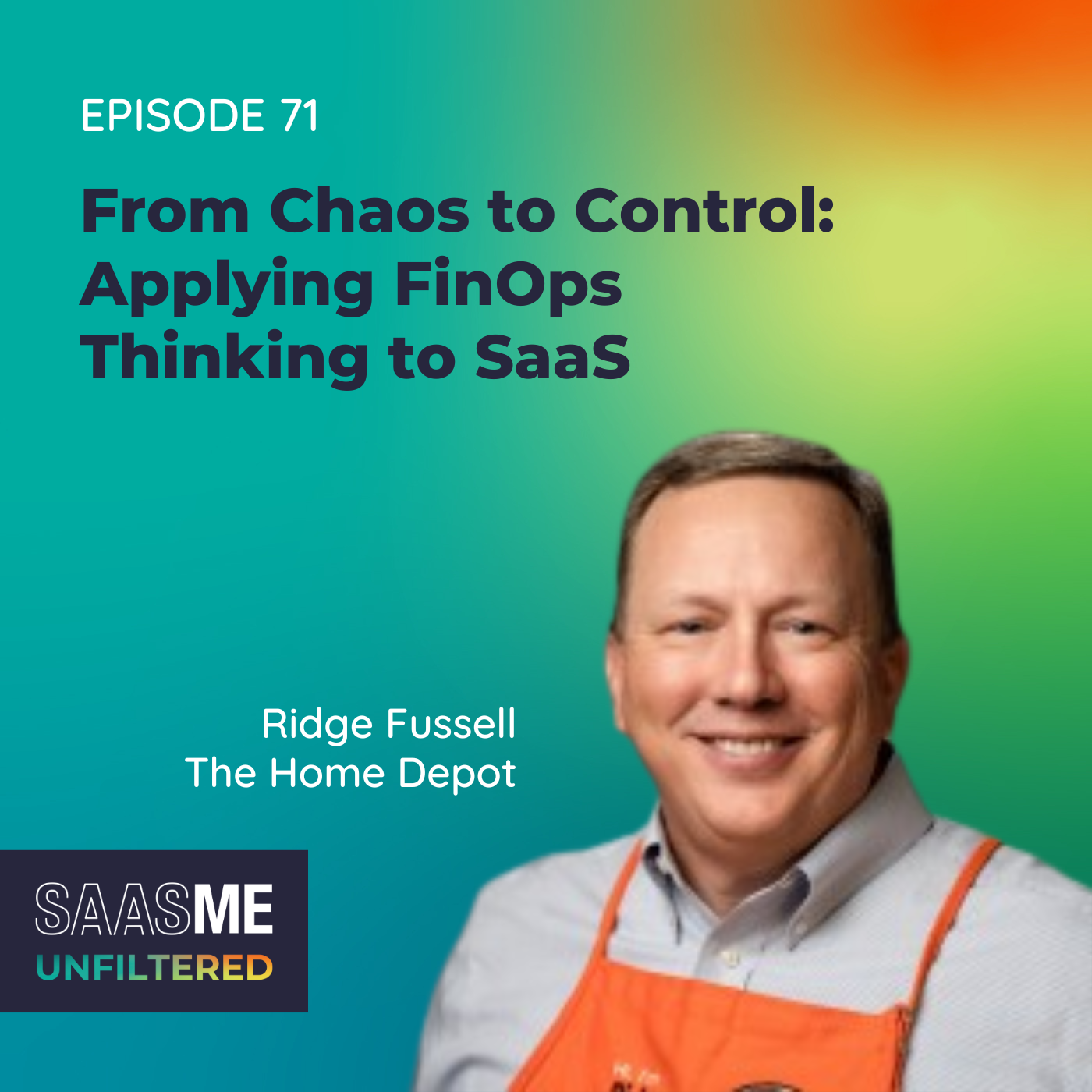IT & Finance: The MVPs of Your SaaS Management Program
- 0.5
- 1
- 1.25
- 1.5
- 1.75
- 2
Chris Ortega: If you want to move fast, go alone. If you want to move further, go together. Those are the conversations. You got to get down with the business, and speak the language of what it means to be a chief marketing officer and why they have the solutions. I think putting the ABCs into the office of the CFO, the always- be- curious aspect of it, and connecting the dots between why it's important, what's in it for that business partner, and here's where we're going together. That is where you see those CFOs and finance professionals really driving this spend management strategy.
Cory: Hello, hello, and welcome to SaaSMe Unfiltered, the SaaS management podcast. The show with give- it- to- you- straight, real- life advice from pros knee- deep in SaaS every single day. SaaS management superheroes just like you.
Ashley Hickman: Welcome to another episode of SaaSMe Unfiltered. I'm Ashley Hickman, manager of customer success at Zylo. As you've probably heard us talk about before, SaaS management is a team sport. IT, SAM, procurement, finance, they all play an important role. I mean, how can you expect to hit your SaaS management goals out of the park without these key players working together? This year at SaaSMe, Zylo's flagship industry event, we invited a few MVPs to chat about their perspectives on SaaS management. So instead of throwing a bunch of Hail Marys and hoping something works, they'll give you a ton of ideas for how to make it a slam dunk at your company. Okay. Okay. Just pulled a little bit of a Cory there, with all the sports references. But in all seriousness, a partnership across the business is so important, and honestly is one of the lesser- known secrets to making your SaaS management program successful. This episode is from our live SaaSMe recording, featuring the incredible minds of LinkedIn's software asset manager, Shravya Ravi, Fresh FP& A CEO Chris Ortega, and Salsify VP of technology and business platform, Gordon Atkin. I'm still reeling from how awesome the session was. So without further ado, I bring you SaaS Management is a team Sport.
Cory: I can't think of a better way to talk about SaaS management as a team sport than to bring together three unique perspectives in the industry. So without further ado, I'd like to introduce Chris Ortega, CEO of Fresh FP& A, Shravya Ravi, manager of asset management at LinkedIn, and Gordon Atkin, VP of technology and business platforms at Salsify. Something to note about each and every resource is, we've got a cross- functional team here. Finance, software asset management, and IT. So we are so excited to hear your differing perspectives on SaaS management and why it is a team sport. So, welcome to all of you. I'd love for each of you to do a quick introduction of yourself, your company, your role internally, and then we can get kicked off from there. I will start calling some folks out. So Shravya, we'll start with you.
Shravya Ravi: Thank you, Cory, and thank you for the great introduction. Very excited to be on the panel. Hi, everyone. I'm Shravya Ravi. I am the head of softwares and management at LinkedIn. Prior to LinkedIn I've worked at Cruise and Deloitte in various capacities, all within IT asset management and compliance. I'm very excited to be here today.
Cory: That's fantastic, and thanks, Shravya. Gordon, you're up next.
Gordon Atkin: Yeah. Gordon Atkin. Thank you, Cory, for the invite, and hello to everybody out there. I'm the vice president of technology and business platforms at Salsify. Salsify is a phenomenal company. Think of us as the digital shelf company. We bring brands and retailers together, and we operate through the digital shelf. So very excited to be part of Salsify, very excited to be part of this panel and to tell some stories.
Cory: Chris, over to you.
Chris Ortega: Good morning, good afternoon, good everybody. I'm Chris Ortega, CEO of Fresh FP& A. I have over 18 years experience in accounting, finance, FP& A, and finance leadership, leading organizations from seed to startup, to scale- up, to enterprise- level companies. Really, really excited to be part of this conversation and be part of this great panel. This is going to be awesome.
Cory: That's great, Chris. Thank you so much. Chris brings the fire, as do I, in some circumstances. So I've encouraged Chris, man, bring it all. Bring everything you've got for today's session. So, it should be fun. Okay. So, I'll ask a series of questions. I'll provide some direction on who can chime in, but feel free to open up the conversation among the panel as well. I want to begin with just framing out your roles internally in your organizations today, especially when it comes to SaaS management. We're going to start with Gordon and Shravya first. The question really is, what is your function trying to accomplish? At its core level, what are you responsible for? What are the high- level outcomes and KPIs that you measure yourself on today inside each of your enterprises? Gordon, I will start with you.
Gordon Atkin: There's two words that come to mind when I think about running SaaS. I refer to it as a program market. It's an ongoing... And there's two words that really come to mind. One is transparency. I want to have transparency and visibility across the entire organization in terms of what we're spending our money on. Most departments know what they're spending their money on, but CFOs, IT leaders, procurement leaders, there's lots of people in the company that need visibility and transparency into what's going on. The second word that comes to mind is discipline. Recognizing, again, how much money is spent on software, SaaS specifically, within organizations. We need to have a discipline. Oftentimes, let's step back a decade or two ago, when SaaS wasn't around and there was a lot of rigor around capital spend, and there was a lot of rigor around that. Introducing SaaS, that rigor has become less and less. So, reintroducing rigor and discipline back into what we do is something that I really try and focus on.
Cory: That's fantastic. Gordon's been a two- time customer of Zylo's in each stop, really just gaining visibility and then implementing that practice internally. So, listen to what he says. He's pretty experienced in the space.
Gordon Atkin: Nice.
Cory: Shravya, you are in software asset management. I'm so excited about your program and where it's headed. Please share with the audience your role and how you're measuring yourself, especially as it comes to SaaS.
Shravya Ravi: Absolutely. Traditionally, SAM has always been mostly on- prem. With the spend moving from on- premise to SaaS, it's an area that we have to start paying attention to. So, have long- term and short- term goals. But I think for the short- term, like Gordon said on his first point, the transparency, the visibility is what's most important. Because when you look at app owners, they actually know what they're spending money on. But there might be three other app owners spending the same money on the same thing. We just need to get that visibility throughout the organization. So the first goal is to get the visibility, and that in turn, when you tell a story using the data and other things, like the policies and everything else, it just helps drive organizations make better- informed business decisions. That's the long- term side of it. But a lot of these decisions come in the form of software rationalization. It could be reclamation policies for application owners, improved budget management, compliance from a security point- of- view. That's huge. Cost savings opportunities, chargebacks within the organizations. You have a single application for the entire org, you charge back, you know what each org is spending. There's a lot that comes from it. So, overall operational efficiency is what we're looking for in terms of SaaS spend.
Cory: That's great. I love how simply you put it. It's discovery, it's visibility, it's owning the data. Now, that doesn't mean that you can't say one minute later, " We're going to do all of these huge initiatives down the road." But you've really got to nail those fundamentals. And you're off on that journey at LinkedIn, and we're super- excited to be partnering. So, that's great. Chris. All right. Let's talk. You've headed up finance at multiple organizations in a fractional CFO role, so I really am interested in understanding your varied perspectives and your experience dealing with SaaS and OPEX. But how do you see most of the companies that you're working with addressing SaaS? Especially now, given a little bit more of a tighter economic environment going on, how is that being handled as you look across your portfolio now and historically?
Chris Ortega: Yeah. Yeah. So I've been both a practitioner as well as a fractional CFO in managing companies, and this is always, to me, I think, when you look at the overall... And I know CFOs talk about numbers. This is a$ 4. 5 trillion spend that we're talking about, based on what Gardner expects the SaaS spend to be. So this is a huge, what I consider a greenfield opportunity. We've seen the Fed raise the interest rates about a week ago. We see the uncertainty around the economic climate, the globalization piece of it, things going on in Europe. When you look at opportunities to make an immediate impact, people is typically the first place that a lot of traditional CFOs go to in terms of how they manage their spend. But one thing that I've seen is the ability to centralize your SaaS spend, and really operationalize it, and really get your hand around it, and getting to this overall topic. And bringing in your IT, bringing in your HR, bringing in your marketing. Bringing in the other functional areas to be part of the conversation to say, " What makes the most sense for our organizations, both around SaaS spend, but where do we have opportunities to streamline, to scale, and to optimize that?" This is one of the biggest opportunities that CFOs have to really make that immediate cashflow impact in their business, and it's traditionally not the first place that people go. So, I look at that. I've been inside organizations where you've got spend on company credit cards and expense reports, and you've got it all over the place. So I think, to me, really like what Gordon said. Having that transparency, having that visibility, but throwing that collaboration and throwing that overall connection to a strategy that you're driving inside the business. That is where you really, really see finance teams partnering inside the business, making this successful.
Cory: Yeah. Chris, great response. Quick follow- up there. Why? Why do you care about SaaS? Why do you care about OPEX specifically? You hit on it just a little bit, but maybe expand on that a little bit. What does OPEX mean to you internally, Chris, in all of the enterprises in which you're working?
Chris Ortega: Yeah. So OPEX, whether you're a startup, scale- up, or enterprise- level organization, really, this is such an important conversation. Because a lot of the finance people, all my finance community, you're probably working on your OPEX budgeting right now. You're probably working on your first pass. You probably got Friday, that first conversation that you're having around budget. What better way to bring the value to the conversation by saying, " Look, we have this operational spend in different pockets of our organization. How can we lead a strategy collaborating together to make sure we're having, A, the most efficient products and solutions? B, making sure we're making an immediate impact in the short- term." That's the most important thing, is you can operationalize this. Having a partner to look at your contracts, to be able to make sure you're getting the best pricing, to be able to make sure that you're monitoring and tracking the usage and performance of those SaaS solutions. You're getting all the rigor that you would take in that budgeting process that you would do for people headcount, for capital spend. You're taking that same framework that finance organizations are used to and applying it to a huge opportunity inside your business to make those short- term, medium- term, and long- term impacts. I think that's the most important thing. Managing your SaaS spend is not just a short- term, " Well, put a BAND- AID on it." This is a long- term strategy, and having a partner to helped you in those different elements along that journey, that's why it's important for CFOs to be thinking about this.
Gordon Atkin: One of the things that I think CFOs and others care about is, they do care a lot about managing risk. And until you know what your footprint and what your exposure is, it's hard to really know where your risk and where you're exposed. Especially from a security perspective. You might have applications where there's personal information that's being shared, and you don't know about it. So there is a component of risk that I think CFOs do care about, that they want to make sure that it's being mitigated and managed properly too.
Cory: Totally agree there. Chris, I'm going to keep coming back to you. What we see right now across our customer base in the industry is, budget season. You just mentioned it. A CFO is handing out tasks. Either keeping budgets flat or reducing budgets today. Who do they go to? They go to their CIOs and say, " Here's your task. Go figure it out." They go to procurement teams and software asset management teams and say, " Here's the task." And it's the IT finance role to be able to own this data. You've got to be able to own the data to be able to drive those outcomes. However, you've got to have a team to put it all back together, kind of the focus of this conversation today. Shravya, I'd love to get your perspective on, you're not going to be able to drive total SaaS management within a SAM framework success on your own. So as you think about what success looks like over time for you, who do you enlist across the organization to help you accomplish your goals? Who are the critical folks that are part of your program that you're rolling out today?
Shravya Ravi: Fully agree that it has to be a highly, highly collaborative initiative. It's just not be done in a silo. I think the first thing that comes to mind is executive sponsorship. That has to be there. It's the biggest win, if you can get it. Because when it comes top- down in terms of, "This is how we're going to operate as a business or as a company," it's more likely to be followed. In addition to that, once you do have that executive sponsorship, then it further sets into motion whatever work that we can do with finance teams. That is one team that we work with closely for budget monitoring. What's budgeted, what is our spend looking like? And taking that information and passing that on to our procurement sourcing and vendor management teams. That is another critical area, because they work closely with legal, which impacts how our contracts are being written down. Also, we work very closely with application owners. We can't go after every single application owner. The 80/20 rule, where 80% of your spend is on 20% of your vendors. We go after the top ones. We work closely with the application managers to get usage information. Yes, we talk a lot about spend, but the usage side of it is also really important. What percentage of people are actually using it? A lot of times you see a lot of unused licenses. How do you actually get those back, and how do you structure your contracts in a way that you're able to get that and retain your money back? That sort of a thing. And then we also work with our security organization to bring up expense software that has not been through a security review. I think that's a big win, at least for the risk side of things, that Gordon was mentioning. Everyone cares about the unknown risk. A lot of organizations overall, it's definitely not in a silo. There's a lot of, " Oh, we need resources. We need to do that." A lot of project planning and program planning. But yeah, that's what we're doing right now.
Cory: That's awesome. Rolling out a brand- new program from the ground up, leading- edge enterprise- level work is something that LinkedIn should be commended for. I love that you are on the front end of defining the next era of software asset management. Gordon, you've come into organizations in a CIO capacity and immediately started to look for that visibility into your environment. As you've set up SaaS management a couple times already, who do you enlist in the organization to be your key stakeholders and your partners in crime as you start to drive optimization at scale?
Gordon Atkin: Yeah. There's three key personas that I look for. Number one is the FP&A persona. Who, at that level is going to really help us understand the spend from a budget perspective? Where are we allocating the dollars across the organization? And even in that exercise, sometimes your FP&A or finance people aren't aware that there is spend for a vendor across multiple business units. So having that conversation with your FP&A partner is really, really important. The second key persona I would say is procurement. And procurement I'll use very broadly, because there's a lot to it. There's the negotiation side of it. There's the renewal side of it. And there's just, how do you manage contract terms and conditions and things like that? So, the procurement persona is really critical. Making sure that you've got a procurement flow that you can scale with the organization and will help you rein in the costs and the controls that you need to manage that spend. And then the third persona, I will say, is more of a broad persona. It's what I'll call the stakeholder persona. That's why I love the title of this panel and the session, is it truly is a team sport. When you really get into the motion of managing SaaS spend, everybody in the organization... When I say everybody, you're going to have key personas within different departments that are going to take a lead role to say, " Here's how I care about the spend for my department, and here's how we're going to evaluate it for marketing. Here's how we're going to evaluate it for engineering, for product." And that stakeholder persona really becomes a key part of that team, giving them access to the system, giving them transparency and visibility into what's going on, and again, the discipline that you're trying to generate across the entire business. So, I try to enlist as many people as I possibly can. I think that when you bring together more and try to operate as one versus one trying to operate as many, there's much more power in that.
Cory: Yeah.
Chris Ortega: Hey, Cory. I would add to that too. So speaking to those small- to- medium- sized CFOs that are looking at me right now saying, " Chris, I got a team of two people in my finance organization. How am I going to bring procurement? How am I going to bring all these different stakeholders?" The best way that you can do this is, now you got a partner. Imagine having a partner that can help you in that procurement process to say, " You've got these set of SaaS solutions. I don't have a dedicated procurement person on my team, but I do have a software partner that can help me negotiate, that can help me on the renewal side, that can help me bring in the contracts." So one thing that I've been able to manage finance organizations that are small, from three- persons team all the way to 60- people teams in the organization, this is where bringing in the partnership element. Not only identifying a company that can help you manage, but actually get you the pricing and help you fit some of those personas. I've been part of SaaS teams where we go hire a partner that helps us negotiate, helps us bring in that batteries- included knowledge to help fill the gaps in the personas that we don't have in the organization. So I think, for those CFOs out there that are managing those small businesses, get you and build great partners. That gets to my first point that I mentioned earlier. That's the tactics of how to reduce spend. You've got to have partners that will help you drive that strategy inside the organization as well.
Cory: Yeah. Partnership is huge. I've always had a theory that CFOs lack visibility into SaaS, certainly, but OPEX in general. Which is why they hand down the task to the CIO and they say, " Go reduce budgets, and get it down to this number, and we're doing an initiative to get that done." Is the prepaid report really the trigger that gives the CFO visibility into some of the SaaS that's being purchased in your environment? Where else would the CFO go to get any of that data today?
Chris Ortega: The number- one place they to go to is not the prepaid report. It's your accounts payable. Go look at the bills, go look at the money, go follow the money. One of the best ways, and one action item that I give every CFO right now, "If you want to start getting just held around your SaaS spend, go deep dive into your accounts payable." Why would I tell you that? Because that's where every dollar is going out. Where's all the dollars going out? Where's the money? Where's the money going? Now you have a way to be able to identify that and say, " Man, we're spending this on launch and this solution? How are we using that? How is this actually providing productivity?" One thing that I've seen come across the pandemic and diving into the specific AP side of the business is, you see all these different other point solutions that people just, " Hey, we had to get our people to be productive, so we allowed our organization to get the platforms and SaaS solutions that they needed to be efficient and effective in their job." But there was no rigor around it. There was no highway around it. Go deep dive into your AP, identify those core vendors, and begin getting in those partnerships and having those conversations to say, " Does this SaaS solution really make the most sense for the long- term of where we're going for our organization?" Those are the key pieces of it, and that's where you uncover some of those hidden gems.
Cory: I feel like this is the power squad that we need to assemble in an enterprise to just drive the best SaaS management that's out there. But it kind of relates to my question a little bit. Shravya, rolling out SaaS management in a brand- new way. Gordon doing the same thing. Shravya, we'll start with you. How did the business receive your initiative? How did these cross- functional stakeholders, the application owners, your finance and procurement teams... You're rolling something out that requires that team- sport mentality. How did they receive that, and how did you really start to get them on- board as advocates, as part of the program?
Shravya Ravi: I think this is common to everyone. The first answer we usually get is, " We don't have resources." It's a common theme everywhere. But it's also important that we talk about why we're doing what we are doing, and how it's going to impact how we do business. Not just from a cost- savings- or- whatnot perspective, but also a risk perspective. If we talk about reaching out across the table to, " Hey, we need this help from you, and this is how much help we need." For me, it's always, first, execute a sponsorship, again. Second, once you actually execute a sponsorship, it's a prioritization exercise. How high up in the priority list are we? Sometimes not always at the top, but I think, depending on the stakeholder, we get there. Sometimes it's a waiting game. Sometimes it's, " Put in a ticket. We'll look at it." So influencing some of that without power, if that makes sense, is one of the key things that we do. Again, outside of that, building those relationships prior to even looking at SaaS as a SaaS management program. Letting them know, " Hey, this is what we do for SAM on- prem, and we can translate this to a SaaS side of things."
Gordon Atkin: Let me kind of elaborate a little more on that, Shravya. I think one of the things that you said early- on, getting executive sponsorship, is one of the key areas that you can focus on to enable that across the organization. Cory, as you alluded to, I'm in my third company where I've run into a SaaS management. And in the very first go- around, which was back in 2015, I think. You'll have to remind me of the date, but it really was pulling teeth. There were people who were interested in, " What are we spending our money on? Where do we have opportunity to consolidate, reduce, save money?" And then, over time, my responsibility was to continue to educate and help the team understand, " Okay. Not only are we going to do this as a point- in- time exercise, I'm actually going to hire people to do this full- time." So we actually put a job posting out there and we said, " We're going to hire a software asset manager inaudible focus, to make sure that they're paying attention to the key data points and practices that we wanted to implement." At company number two, it was almost like I came in, it wasn't implemented, and it was my expectation that we kind of stand up the same thing. Now, we didn't have the opportunity to really do it as well as the first company, but everybody understood that it was an important exercise in terms of getting visibility to where we're spending our money on. This third company now, at Salsify, that I'm at, I'm entering the game where people are coming to me. So I think what you're seeing is this transition from an IT- led, or even a procurement- led, to it is a cross- functionally- led effort. In fact, I had one of my FP& A leaders set up a meeting with me, and the title of the meeting was SaaS Management, What are We Going to Do? This wasn't me going out and saying, " What are we going to do?" But it was the FP& A leader, and that was the first experience that I had somebody non- IT who was really leading that charge and that conversation. So I really feel that you're starting to see that transition of it becoming much more important, not just to IT, not just to finance, but it is coming across the entire organization. And I really believe that executive sponsorship is really important.
Chris Ortega: Gordon, if I would just add on this. I love what Gordon just said. A lot of times, when you look at the office of the CFO, what they've done is said, they see the... Maybe it's that one expense line item, and it's software. And you see it and they're like, " Reduce that number by 30% and go get it..." It's dismissive. But taking it back to the strategy. If you understand and help people understand what's in it for them, why is it important, and where are we going? There's a classic analogy I always use when I lead finance organizations. If you want to move fast, go alone. If you want to move further, go together. Those are the conversations. You got to get down with the business and speak the language of what it means to be a chief marketing officer and why they have the solutions. I think putting the ABCs into the office of the CFO, the always- be- curious aspect of it, and connecting the dots between why it's important, what's in it for that business partner, and here's where we're going together. That is where you see those CFOs and finance professionals really driving this spend management strategy.
Cory: Got to get down with the business. Let's go, Chris. I love it.
Chris Ortega: Get down with the business. Get funky with the business.
Cory: That's what we're doing from now on.
Chris Ortega: You got to dance with them.
Cory: That's right. It is a dance. Okay. A round- robin question for each of you. You are all thought leaders in the space, and you've got a great perspective on what's to come. We're all starting to plan, and budget, and forecast for 2023, calendar 2023. So, I'd like for each of you to look into your crystal ball. What's one prediction you have for SaaS and spend management for IT and finance leaders as we look at 2023? I will begin that, Shravya. I think you're on the hot seat.
Shravya Ravi: Well, the only thing, at this point, that comes to mind is, with the macroeconomics and everything else happening outside of this, you got to pay attention. You have to start looking at the data. You have to tell a story using the data. And it's very, very important that something come out of the data that you are looking at. That's where I see, at least for the next one year, everyone's going to start paying attention. But it's also what you're going to be doing with whatever you are seeing. I think that's important. It could also look like changing how we do business internally. Do we give everyone what they need, or do we scale back and say, "You got to make do with one or two applications"? Starting thinking about it in a big- picture way.
Cory: Yeah. I like that. I was talking with someone earlier today where, for software asset management and finance and procurement, you've really got to focus on what your core competency is, and become even more focused. I think there's always a natural sense for finance, SAM, procurement leaders to say, " Well, yes, we drive efficiencies and optimization. But we do all of these other wonderful things." I think now it's time to refocus on your core competency. It's Super Bowl time. It's time for everybody to go, to be a part of bringing a company along in the right way. So Gordon, for you, what do you see for SaaS management and spend in 2023 for SaaS?
Gordon Atkin: Yeah. I've got two that play off of each other. I think the main one is playing off the macroeconomic environment. My first experience with running a SaaS management program was really focused on inventory. That later became a cost- cutting exercise, and having targets around cost- cutting. So while a CFO today might say, to Chris's point, " Go and cut 30% out of this," I think that there will be real targets for companies to say, " Go and save X% of your SaaS or software spend within an organization." Because a lot of companies are going through that motion of letting people go. Some are evaluating their priorities and evaluating what they have available to invest with inside the organization. So having a real target is going to be, I think, something that will happen, if it isn't already happening with some organizations. The other one that I'm seeing more traction of is procurement teams becoming part of IT, because there's such a close connection to what they do. The majority of SaaS spend in SaaS organizations, it's all software. It's all technology. And that relationship with CIOs and leadership is really key. So I think that CIOs, I think, really... I care a lot about the procurement practice, and I tend to find that the procurement practices aren't as valued, to some extent, outside of IT and finance. I firmly believe you'll see much more of either strong partnerships or reporting lines directly into CIOs with procurement teams.
Cory: I think that's great, and we do see that today. You'll see procurement tightly aligned with IT super- early in their growth story and their maturity. Then sometimes getting away from IT, and then being pulled back. And in huge organizations, large enterprises that we work with and I've worked in in the past, they'll have dedicated IT procurement teams. Couldn't agree more with that. And I think, as we look at the folks that are leveraging Zylo to drive optimization, we see, Shravya, software asset management and procurement playing very different roles, but also playing very complimentary roles in the organization. Because optimization, demand management, staying on top of all of your investments is critically important to both organizations. So, that IT and finance use case around managing software- as- a- service just really shines through. Chris, what about you for 2023? Where do you see things going? As I mentioned, you've got that varied perspective, so I'd love to hear your thoughts.
Chris Ortega: Well, for me, this is a tremendous time for the office of the CFO and finance leaders to really bring a tremendous legacy. Finally, we have the opportunity to give the business what they need. We need to be great collaborators. We need to be great communicators of the strategies and tactics that we're implementing. We need to bring clarity to our software SaaS spend, and lastly, build that connection inside the organization. To me, that's what the business needs out of... That's what the business has. That's what the business has always demanded. And now, it's our opportunity to meet that demand and over- exceed. So to me, that is where I'm really looking forward. And challenging all those finance CFO leaders. Bring that collaboration, that communication, that complexity, and driving clarity, and also that connection. That's our task.
Cory: Did you enjoy the episode? Pass it along to your friends. Subscribe to get notifications for the latest episode, share your favorite takeaways, and join the conversation on social media using# SaaSMeUnfiltered.
DESCRIPTION
IT and Finance leaders at today’s most progressive organizations get it. SaaS has permeated every part of the business and responsibility for managing it sits across a range of stakeholders. What makes their partnership a game-changer for SaaS Management? In this episode, recorded live at SaaSMe 2022, hear how leaders at LinkedIn, Salsify, and Fresh FP&A are fostering alliances across the organization to drive maximum impact with SaaS.
Today's Host

Ben Pippenger
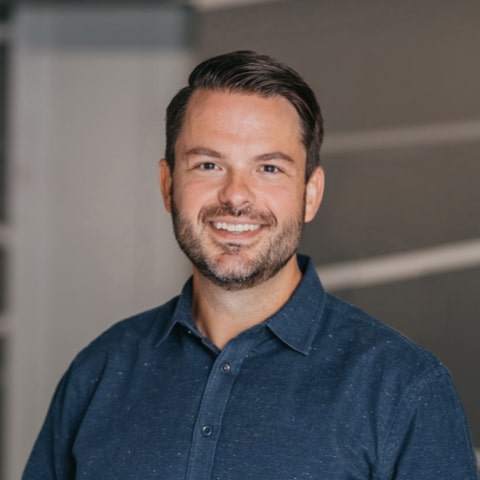
Cory Wheeler
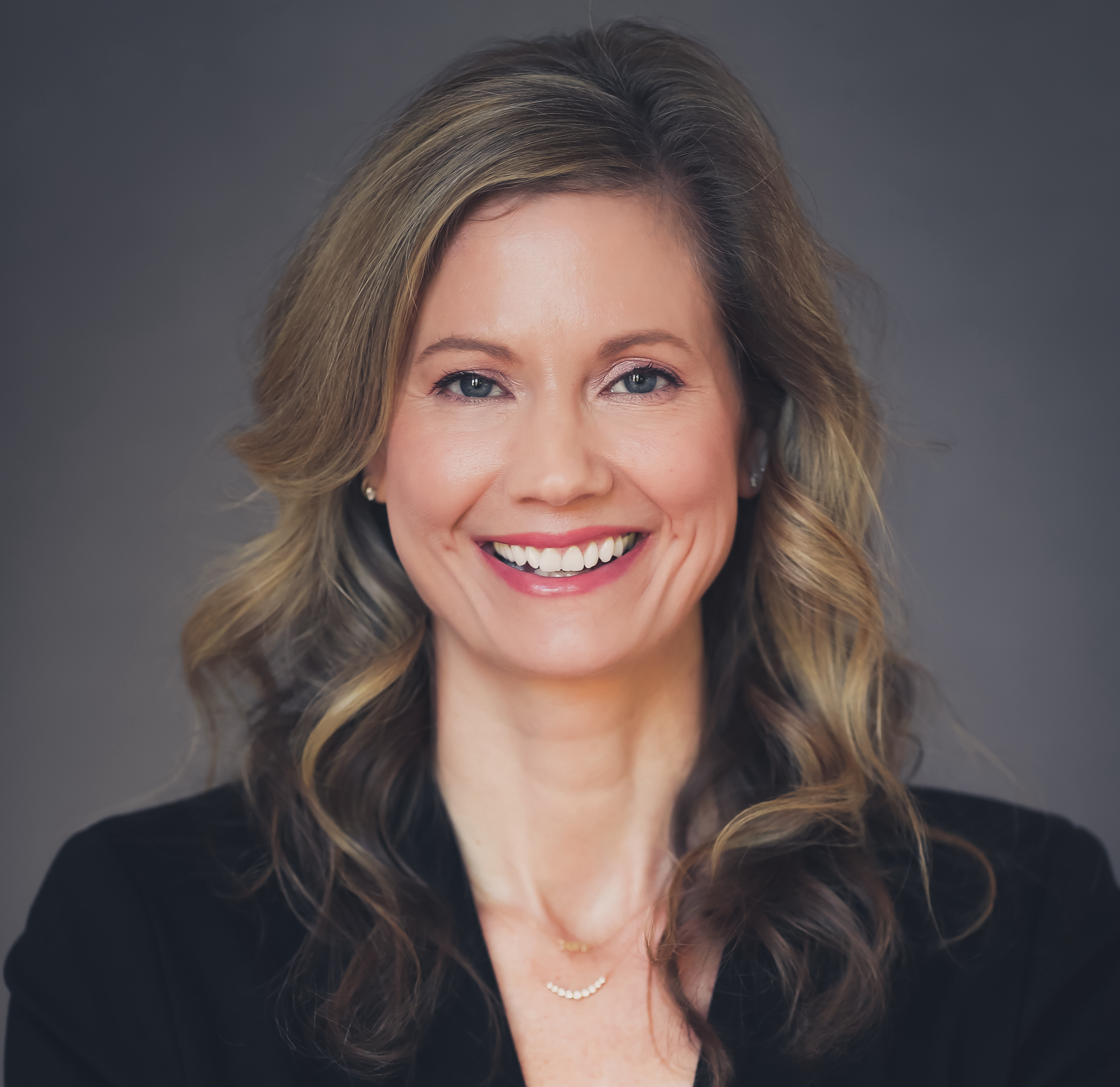
Meredith Albertson
Today's Guests
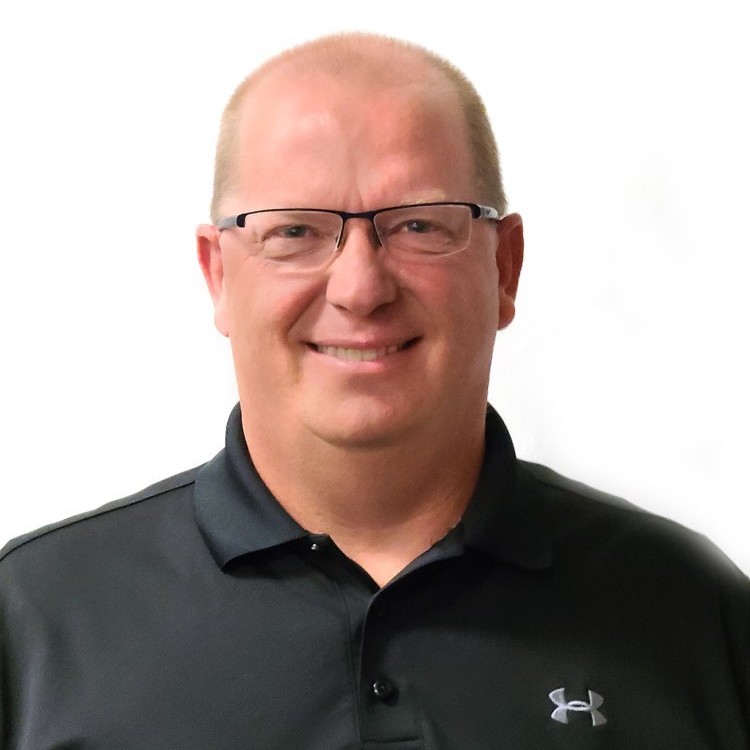
Gordon Atkin

Shravya Ravi


